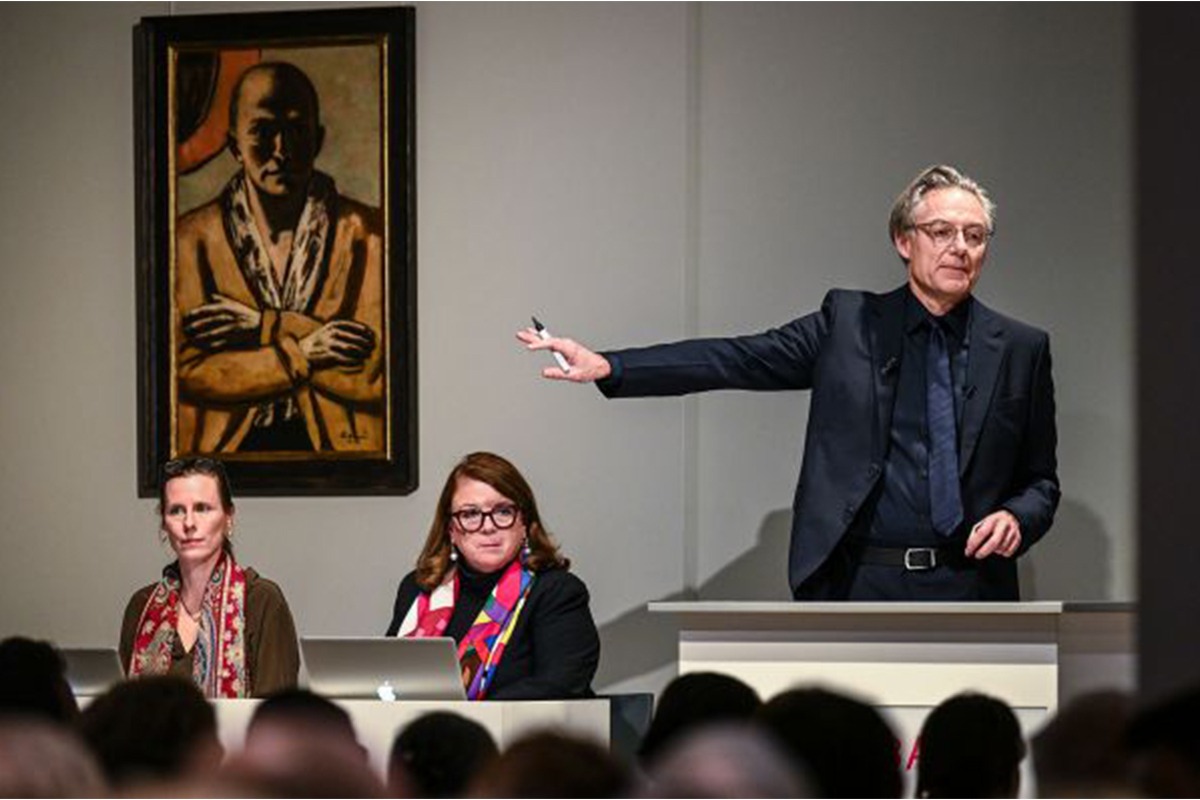
A record-breaking sale at a German auction house is reverberating around the European art market, says Sophie Neuendorf

Sophie Neuendorf
The 1943 striking self-portrait was hammered down for €20 million ($22 million) or €23.2 million ($24.4 million) with fees —the highest amount ever paid for a work of art at auction in Germany. Including fees, the masterpiece surpassed the previous record for a Beckmann self-portrait, which was set with the sale of Selbstbildnis mit Horn, (1938), sold for $22.5 million with fees at Sotheby’s New York in 2001 (Source: Artnet Price Database). Additionally, the Grisebach sale marks the second highest price achieved for a Beckmann painting: Bird’s Hell (1937–38) sold for £36 million ($44 million), including fees, at Christie’s London in 2017.
According to several witnesses, a Swiss collector, who had bid over the phone via one of Grisebach’s partners, was the lucky buyer of the masterpiece. Self-portraits are the most famous of Beckmann’s oeuvre, and this particular work, a striking painting depicting the artist in a fur-lined robe, was painted while the German artist was living in exile in Amsterdam during World War II. Several collectors in the room bid on an array of blue chip works during what can be described as an electrifying evening. Many collectors had also come to see the evening’s star lot and to hopefully witness a record as the Beckmann piece was offered with no guarantee. Self-portrait Yellow-Pink had been on view in New York in November before arriving back at Grisebach’s historic Berlin villa for the December sale. Most likely, it had caught the eye of several American collectors as auction house specialists notably switched over to English during the sale of this particular lot. According to Grisebach’s Diandra Donnecker, the uniqueness of the work stems from the fact that it is one of five self-portraits to remain in private hands; they rarely come up for sale, and works he painted in exile are even rarer.
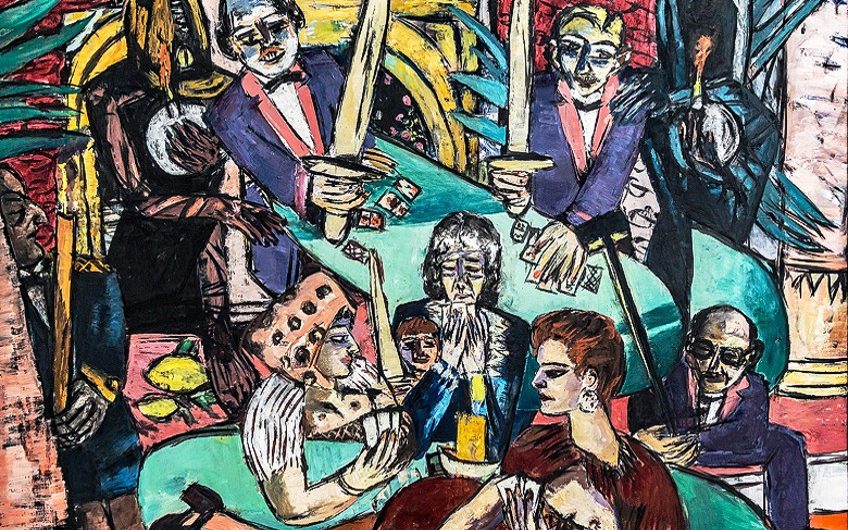
Traum von Monte Carlo (1939 – 1943) Max Beckmann
The Grisebach sale marks a pivotal moment for the German art market, which has steadily gained momentum over the past few years. Sotheby’s returned to the country in 2021 after a hiatus and sales in recent years have been more robust than usual, with more works going for over €1 million. Given the ramifications of Brexit, which is making import and export transactions much more cumbersome, Sotheby’s decision is hardly a surprise. Christie’s has been steadily strengthening its presence in Paris over the last few years and Amsterdam is much smaller in terms of buyer opportunities; so the EU’s largest country in terms of size and economic strength seems the logical choice for Sotheby’s – and consequently, international collectors.
The Grisebach sale on December 1 is more than double the last record achieved in Germany, which was previously held by the auction house Nagel in Stuttgart. Nagel had sold a Chinese bronze sculpture, dating to 1473, for €9.5 million. The record for a painting sold in Germany is held by Grisebach for its sale of another Beckmann work, The Egyptian (1942), for €5.5 million in 2018.
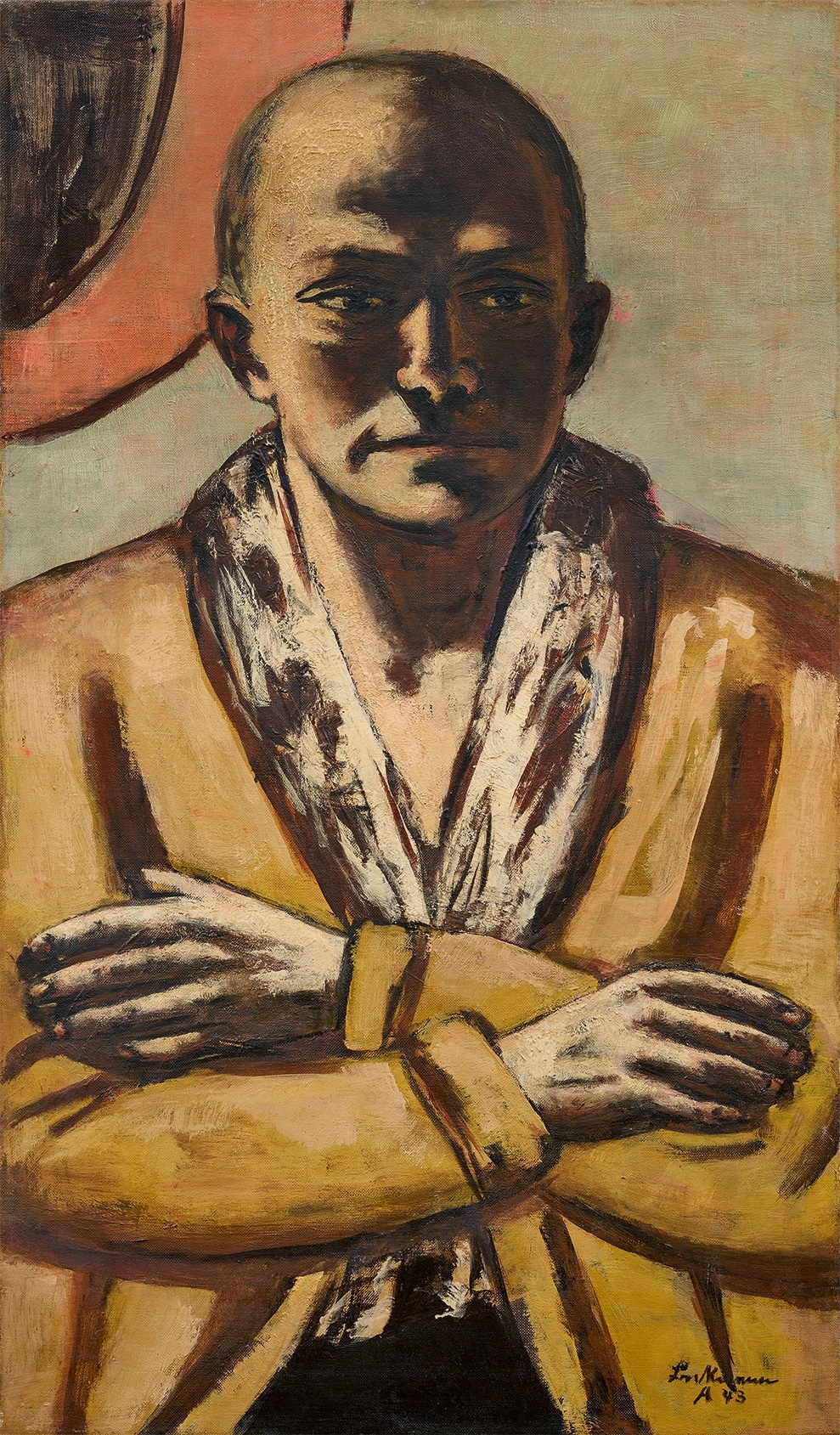
Selbstbildnis gelb-rosa (1943) Max Beckmann
For context, let’s take a look at the market. The top 5 German auction houses, in terms of value sold, are Ketterer, Grisebach, Hampel Fine Art Auctions, Lempertz, and Van Ham (in that order). Ketterer’s total sales value in 2022 thus far is over €100 million. After their December 1 sale, Grisebach’s total sales value for 2022 is also close to 40 million USD. But how does the German market compare to its European counterparts in 2022 thus far? Total sales value this year in Germany was $193 Million. The Austrian market recorded total sales of $94 Million, the Swiss market hammered down $182 Million, and the French market recorded $967 Million in sales value.
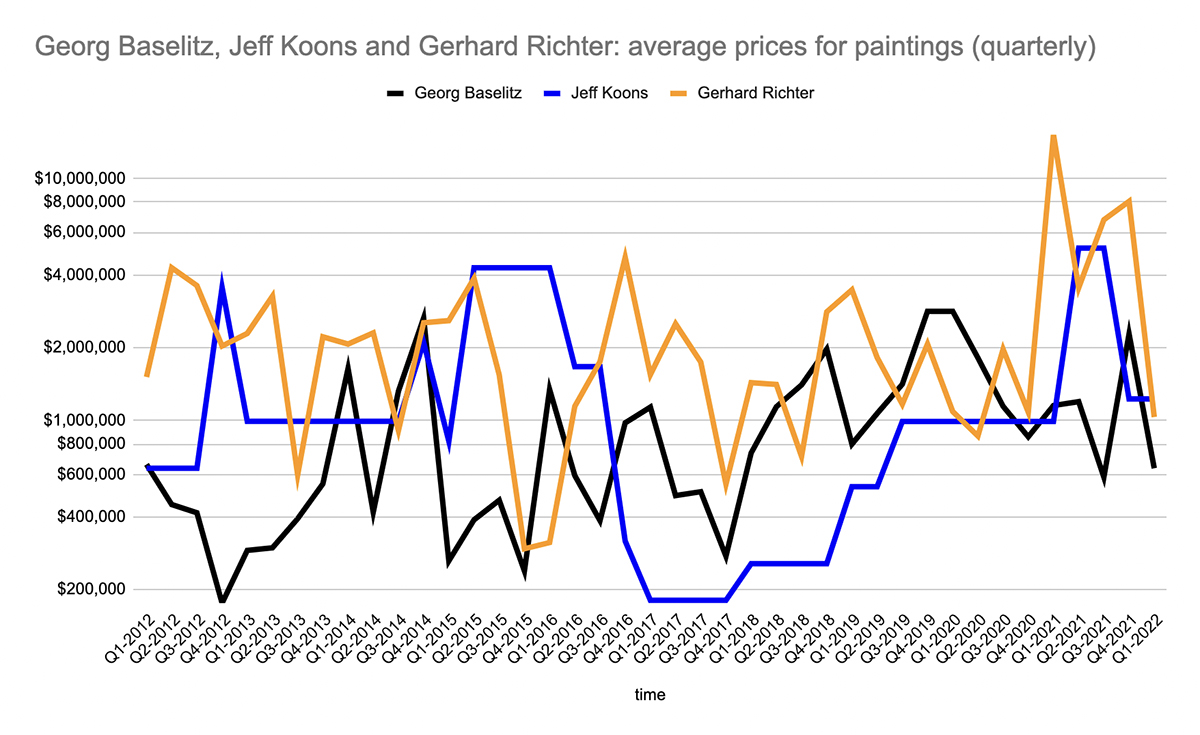
One of the strongest European markets, Germany will likely need to record a few more years of growth until it can compete with France and the UK (which hammered down over $1 Billion in total sales thus far). (Source: Artnet Price Database).
Interestingly, German artists have proven robust through global economic downturns and often surpass their US or UK counterparts in terms of value sold. The top 5 most sought after artists, in terms of value sold, are Gerhard Richter, Georg Baselitz, Sigmar Polke, Franz Marc, and Max Ernst. For context, the total value of Richter works auctioned in 2022 is $223 Million in 2022 thus far – which is greater than total auction sales in Germany this year.
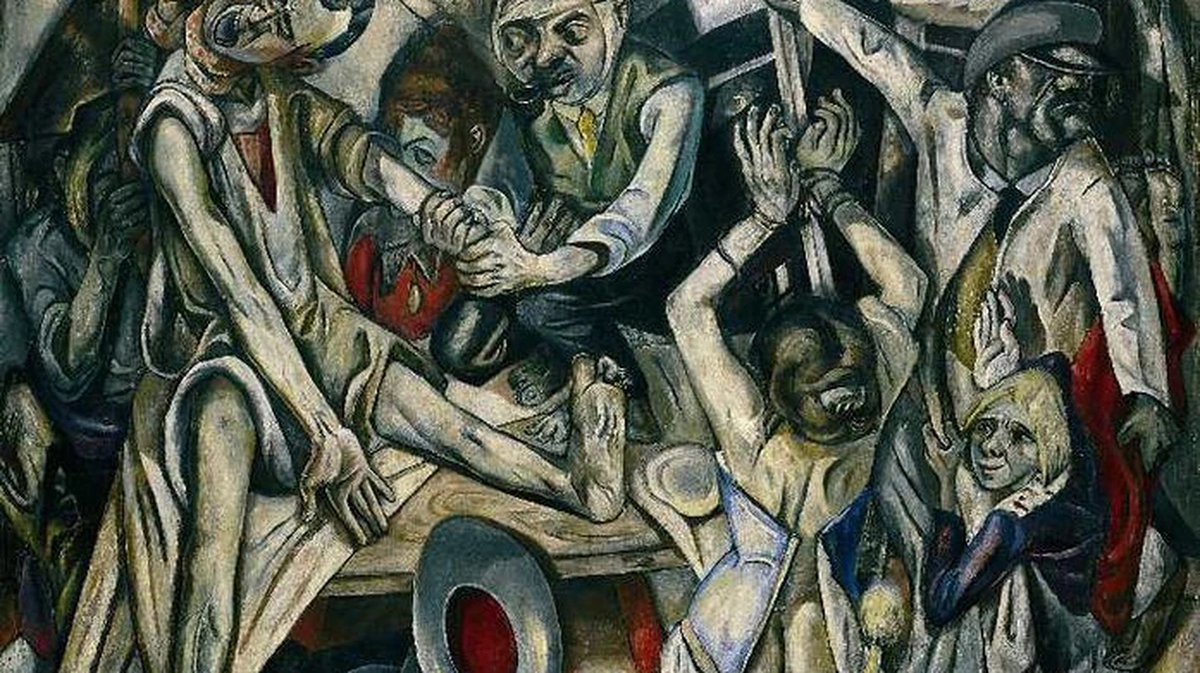
The Night (1918-1919) Max Beckmann
With a historically strong culture of collecting and a deeply ingrained love and value for the arts, it won’t take long for the German market to become a hub for international collectors. An abundance of private collections in Germany will surely provide ample opportunities for acquiring unique and unseen masterpieces. Many of the most important art collections worldwide are located in the country, and quite a few of these marvelous collections will be transferred to the next generation before too long.
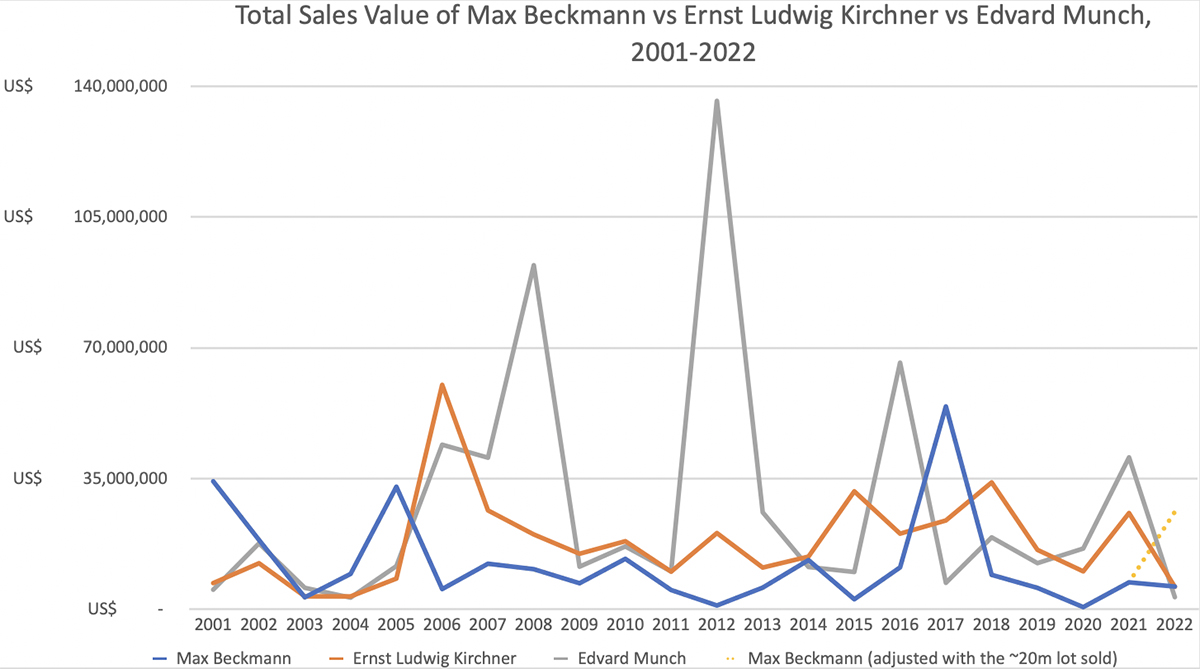
According to Artnet data, German collectors have historically favored Impressionist and Modern art, closely followed by Post War and Old Masters paintings. Now, these same categories are tied to tedious export rules and regulations, introduced by Germany’s culture minister a few years ago (ostensibly to protect Germany’s cultural heritage). The fourth most popular collecting category is Contemporary Art, which is much easier to buy and sell internationally. With the rise of the new millennial generation of collectors, perhaps the German market is primed for a shift in wealth and collecting habits? According to Artnet data and recent sales, the country’s market is drawing an international audience and is on track to compete with France and the UK. Some notable collections to keep an eye on are those of Ingvild Goetz, Karen Boros, Ariane Piech, Nicolas Berggruen, and Desire Feuerle, to name just a few.
Sophie Neuendorf is Vice-President at Artnet.
Find out more: artnet.com








